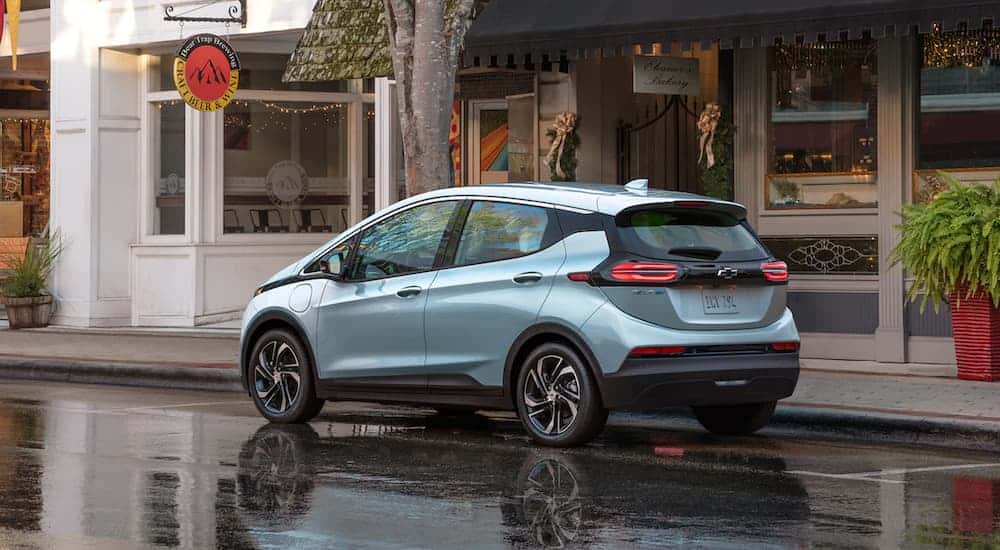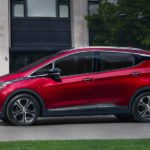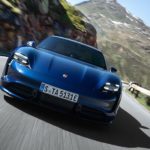The heaviest hitters in the car manufacturing industry are squaring off in the public sphere over how much investment they’re putting into electric and autonomous vehicles. Chevy is just one brand under the GM umbrella to be part of the overall program to roll out new electric vehicles by 2025, directly rivaling against other key EV manufacturers. After the recent Volt retirement in favor of the 2017 Bolt, Chevy’s newest EVs didn’t exactly get people racing to their local electric car dealer. Even with the new refresh for 2022 and the addition of the Bolt EUV with Super Cruise, these vehicles leave a little to be desired in comparison to Tesla and the new Ford Mach-E. Recent revelations may change that.
Now that the Ultium battery platform has been revealed, explained, and integrated into the Hummer EV, it seems GM vehicles are going to get a dose of electric steroids. It bears mentioning that GM has been developing and innovating electric vehicles for decades, so this new Ultium platform didn’t sprout up overnight. In fact, Chevy as a brand has produced several models, including past Silverado and Tahoe generations, which were either partially or fully electric. And if you really want to get nerdy, you can dig back in time to the origins of GM when it was building some of its first electric trucks in 1912. Those trucks were powered by lead acid batteries developed by none other than Thomas Edison.
Over the decades, gas power took over because it was easier, even though the exhaust fumes were horrifying. Move forward to 1964, when the first Electrovair was produced and sold, and this began a whole new resurgence of electric vehicles again. Since then, GM has been busily working on ways to make electric vehicles viable while gas has continued to be more convenient. Meanwhile, Elon Musk forms Tesla, Ford jumps on the bandwagon to compete, and then Chevy tosses the Volt into the mix. Of course, there are other vehicles on the market that are challenging the industry with hybrids – like Toyota’s entire hybrid lineup – but the fully electric vehicles from other producers are few and far between. The few that are available are generally high-priced and out of reach for the average buyer or have low driving ranges that aren’t feasible for most buyers.
Electric Vehicles Chevy Is Expected to Introduce by 2025

Right now, Chevy only has the Bolt EV hatchback and Bolt EUV (which is an SUV), both of which run on GM’s BEV2 platform. During the phase of developing the new Factory Zero plant in Michigan, the two current EVs are serving as a sort of interim offering for the buyers who want a fully electric vehicle in a price range that isn’t outlandish. Even though Tesla recently offered a lower-priced option in the Model 3, it still costs $36,990 for a 2021 base model. Compare that to the newest 2022 Bolt EV, which costs $31,995, and the lower price may draw buyers to the Chevy.
Chevy has several new vehicles on tap for the near future as part of GM’s projection of producing 30 new fully electric vehicles by 2025. Such vehicles are expected to include SUVs, a performance vehicle, and a new electric Silverado. One SUV has been described as being sporty and performance-oriented and is expected to feature the largest OLED screen in any vehicle at 18 inches. The Silverado could potentially rattle the truck landscape, even with Ford’s new hybrid F-150 that currently offers a powerful generator, zone lighting, and a high towing capacity. If the Hummer EV is any indication of the jaw-dropping brutish capability we might see in a new Silverado powered by Ultium, even Tesla’s Cybertruck won’t stand a chance.
Once new vehicles are produced using the Ultium platform, GM expects to retire the older BEV2 platform along with the Bolt vehicles that use it. There are two other vehicles GM produced with the BEV2, but they were never sold in the US. Autonomous vehicles were also built using the BEV2, and for the moment, GM seems to be content to continue developing and testing them with the aged platform. This brings around another side of the EV industry that’s seeing a lot of development. Autonomous vehicles are potentially a major cash cow of the electric revolution that seems to be taking over the automobile industry.
How Chevy and GM Are Building the Future
GM CEO Mary Barra expects to invest up to $27 billion to produce electric vehicles through 2025, some of which has already gone into building Factory Zero, where the 2021 Hummer EV is being assembled. Interestingly, Ford CEO Jim Farley recently announced the Ford Motor Company has decided to nearly double its intended investment of $11.5 billion dedicated to EV development and production to $22 billion. And Ford just announced it plans to go fully electric in Europe by 2026. It seems the market is getting hot and heavy while companies try to outrun each other, which should eventually benefit buyers.
What GM plans for the farther future is to ensure there are electric vehicles across all price points and model types, offering both affordable EVs and those which will draw the more luxury and sport-oriented crowds. The Ultium battery is the keystone holding this entire plan together. With a majority of its materials sourced in the US and the partnership with Ohio-based LG Chem to build the batteries in its own factory by 2022, this should make the end products less expensive. It also means GM won’t have to sweat through issues of product availability for parts.
The Autonomous Market Is Under Way
While the manufacturers begin to find ways to woo customers over to the EV market for personal vehicles, a vast new world of autonomous vehicles is being built, and it might be a surprise to learn some competitors are working together as partners. Cruise is a company focused on automation and has been majority-owned by GM since 2016, but Honda announced in 2018 that it would invest $2.75 billion in Cruise to partner with GM to design and create a fully autonomous vehicle. Enter the Origin in January of 2020, a fully automated passenger vehicle that has the footprint of an SUV, but the interior has seats facing each other with no option for a human to take over the driving. Development of the Origin came on the heels of Chevy’s fully automated Bolt, which also has no driving apparatus at all; however, the seats on the interior still look like a traditional vehicle.
Other creators have been working on automation in recent years, with Ford actually testing fleets in several cities in the US. Those fleets are being used mostly as delivery vehicles with a human still sitting in the front seat while the vehicles are running, but Ford is now building fleets for ride-hailing services in Miami. It just so happens that while Chevy Bolts and futuristic-looking vehicles have been self-driving around the streets of San Francisco, GM’s overarching plan has been to build a ride-hailing industry of its own. With Honda at its side, the creation of the Origin expects to knock down some walls when it comes to production. Cruise claims the Origin should last for one million miles, with numerous working parts being replaceable as needed over time. That should turn the industry on its head.
Another piece of the puzzle is GM’s BrightDrop, which is building products made for commercial use. A current focus of BrightDrop is a partnership with FedEx, which has been testing electric pallets for EV delivery vans built by GM. As part of the deal, FedEx gets the first 500 delivery vans. Fleet vehicles will most likely enjoy the development of the Ultium platform soon, and GM has noted that innovations have already shifted the driving range to reach up to 450 miles, with projections of reaching a range as high as 600 miles from a single charge. Whether buyers will accept fully automated vehicles anytime soon is debatable, but Ultium certainly shows promise for convincing buyers to give up the gas pump.





